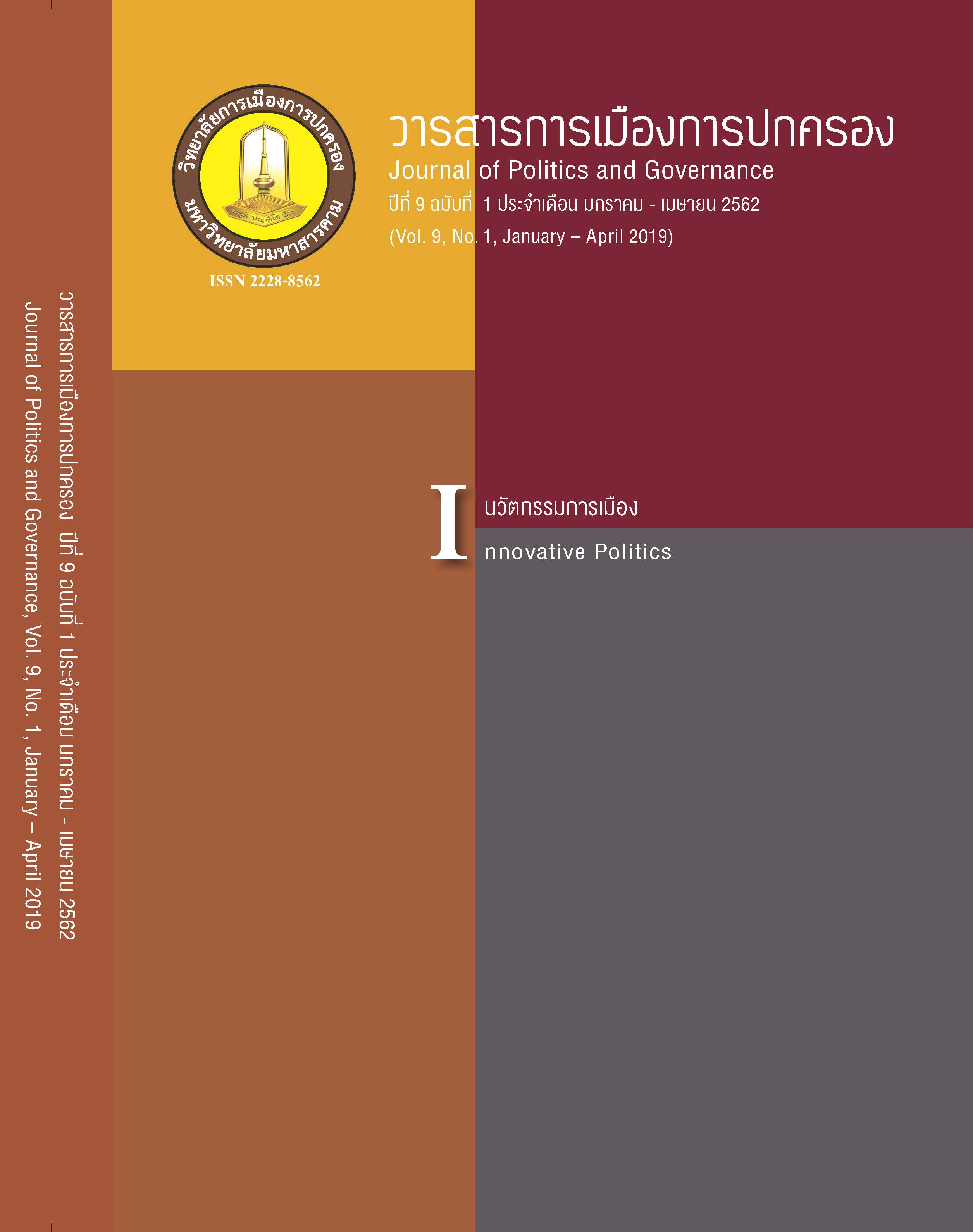The Role of Damrongdhama Centre in Dispute Resolution in Community: Case study of Damrongdhama Centre of Mahasarakham Province
Main Article Content
Abstract
The Dispute Resolution Centre has been established under the Damrongdhama Centre of Mahasarakham Province. It is aimed to settle disputes occurring in Mahasarakham Province which is one intention of the National Council for Peace and Order (NCPO) to bring about reconciliation among Thai people by imposing its declaration no. 96/2557 on 18 July BE 2557through establishing the Damrongdhama Centre under the Ministry of Inferior. However, the objective of Damrongdhama Centre by the NCPO remains quite general or broad. It is that, for example, the Damrongdhama Centre are empowered to gather public complaints, facilitating information access to public, provide advocacy and considering the need of people, while there is no specific implementation steps to achieve the centre’s goals. As a consequence this would probably fail to direct the dispute resolution constructively. Some specific guideline must, therefore, be set to give a clear direction to achieve the dispute resolution. The establishment of Damrongdhama Centre of Mahasarakham Province, thus, helps fulfill the goals of the NCPO Damrongdhama Centre.
The Damrongdhama Centre of Mahasarakham Province has set up a range of specific methods for dispute resolution in community through establishment of the Dispute Resolution Centre. It enables community to pass on different complaints for settlement. The role of Mahasarakham Damrongdhama Centre fulfill the policy of the government in terms of the policy number 10.3 regarding building capacity of government, enhancing the effectiveness and proactive role, make public service more convenient for people by decentralization some administrative responsibility as well as promoting holistic public service, especially in relation to dispute settlement in community. The Dispute Resolution Centre under Mahasarakham Damrongdhama Centre help settle many disputed passed on by the community. The centre would ask for consent from both complainants and defendants to enter into the process of dispute resolution and this would eventually help resolve the disputes. However, due to entering into the process of dispute resolution by Mahasarakham Damrongdhama Centre is merely subject to the consent from the parties of the disputes. The disputes that are not voluntary by the parties are out of authority of the Mahasarakham Damrongdhama Centre to handle, so they remain unresolved disputes and this could contribute to the chronic conflict among communities. This research, thus, aims to study in more details of role of Mahasarakham Damrongdhama Centre in dispute resolution. This would help the researcher look insight into the possibilities that would enhance an effectiveness of the Mahasarakham Damrongdhama Centre to proactively conduct its roles.
Article Details
References
คณะรักษาความสงบแห่งชาติ (คสช.). (2557). ประกาศคณะรักษาความสงบแห่งชาติ ฉบับที่ 96/2557 ลง วันที่ 18 กรกฎาคม 2557 เรื่องการจัดตั้งศูนย์ดำรงธรรม.
จุฑารัตน์ เอื้ออำนวย. (2553).รายงานการวิจัยเรื่องการพัฒนากรอบแนวทางการวิจัยชุดโครงการกระบวนการยุติธรรมทางเลือกในสังคมไทย. กรุงเทพมหานคร: คณะรัฐศาสตร์ จุฬาลงกรณ์มหาวิทยาลัย.
แผนยุทธศาสตร์กระทรวงยุติธรรม พ.ศ. 2552-2555.
ณัฏฐพร ชินบุตร. (2547). การรับรู้ในบทบาทหน้าที่และความต้องการในการพัฒนาตนเองของคณะกรรมการสถานศึกษาขั้นพื้นฐาน ในเขตอำเภอกระนวน จังหวัดขอนแก่น. วิทยานิพนธ์ปริญญา
ศึกษาศาสตร์มหาบัณฑิต, มหาวิทยาลัยขอนแก่น.
บันลือ คงจันทร์และสมยศ เชื้อไทย. (2548). คู่มือประนอมข้อพิพาท “ข้อพิพาทในชุมชน”.กรุงเทพมหานคร: ชวนพิมพ์,
พวงเพชร สุรัตนกวีกุล. (2542). มนุษย์กับสังคม, พิมพ์ครั้งที่ 2. กรุงเทพมหานคร: สำนักพิมพ์มหาวิทยาลัยเกษตรศาสตร์.
ศักดิ์ชาย สุนทรธนาภิรมย์. (2557).รายงานการวิจัยเรื่องการมีส่วนร่วมของชุมชนในการระงับข้อพิพาทในชุมชน: ศึกษาชุมชนหมู่ 7 ตำบลเกิ้ง อำเภอเมือง จังหวัดมหาสารคาม. มหาสารคาม:
มหาวิทยาลัยมหาสารคาม,
ศูนย์ดำรงธรรมจังหวัดมหาสารคาม. (2559. สรุปผลการดำเนินงานศูนย์ดำรงธรรมจังหวัดมหาสารคาม พ.ศ.2559. มหาสารคาม: ศูนย์ดำรงธรรมจังหวัดมหาสารคาม.
สุพรรณี เกสรินทร์ และคณะ. (2558). บทบาทกำนันผู้ใหญ่บ้านในการแก้ไขปัญหาความขัดแย้งชุมชน ในอำเภอทุ่งสง จังหวัดนครศรีธรรมราช ตามระดับการศึกษา. สารนิพนธ์รัฐประศาสนศาสตรบัณฑิต, มหาวิทาลัยหาดใหญ่.


